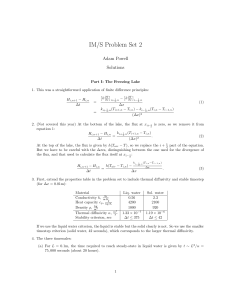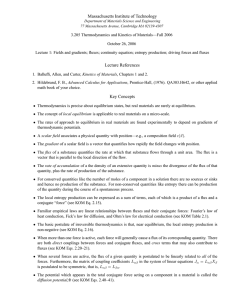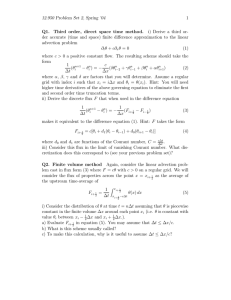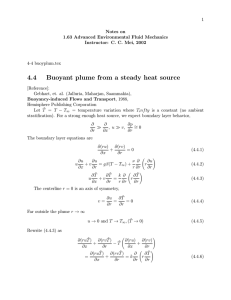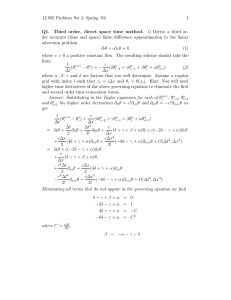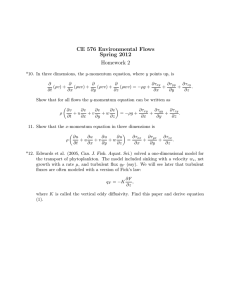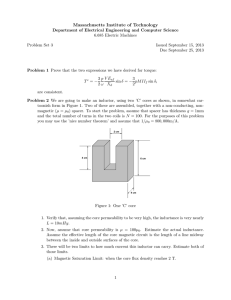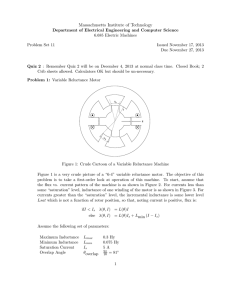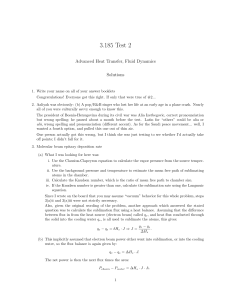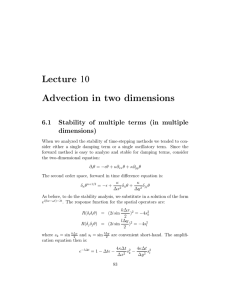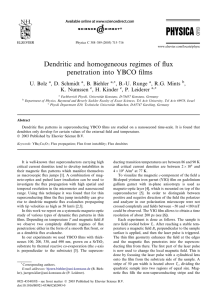ME 422 Problem 1 FEM Homework #6 Distributed: January 17, 2013
advertisement
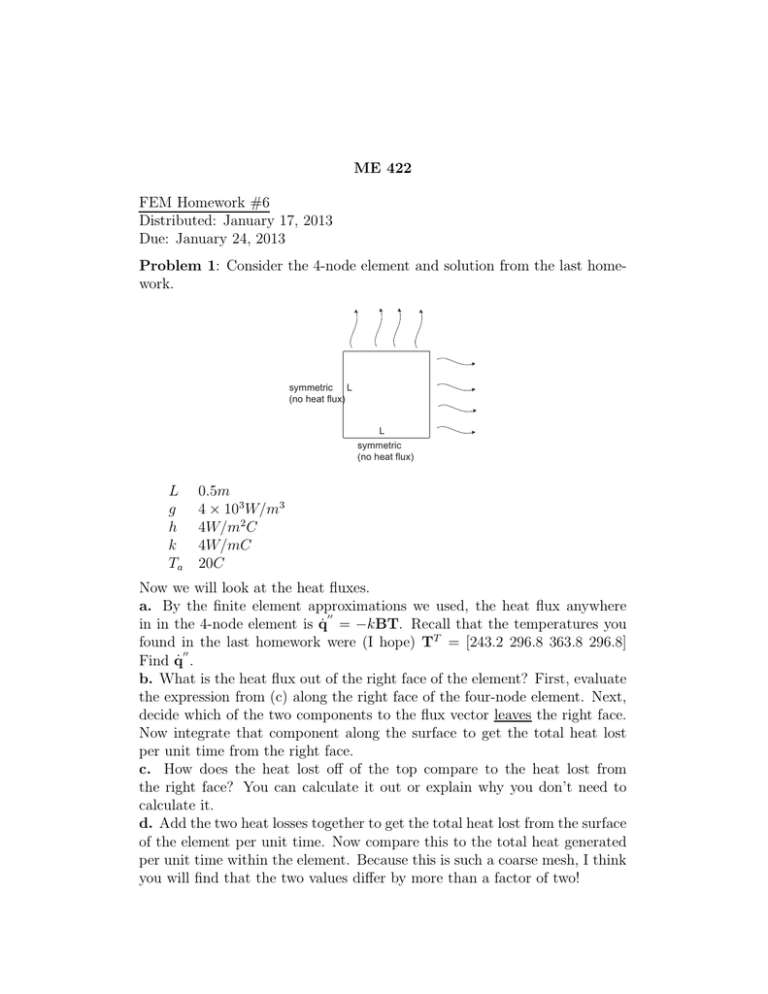
ME 422 FEM Homework #6 Distributed: January 17, 2013 Due: January 24, 2013 Problem 1: Consider the 4-node element and solution from the last homework. symmetric L (no heat flux) L symmetric (no heat flux) L g h k Ta 0.5m 4 × 103 W/m3 4W/m2 C 4W/mC 20C Now we will look at the heat fluxes. a. By the finite element approximations we used, the heat flux anywhere in in the 4-node element is q̇ = −kBT. Recall that the temperatures you found in the last homework were (I hope) TT = [243.2 296.8 363.8 296.8] Find q̇ . b. What is the heat flux out of the right face of the element? First, evaluate the expression from (c) along the right face of the four-node element. Next, decide which of the two components to the flux vector leaves the right face. Now integrate that component along the surface to get the total heat lost per unit time from the right face. c. How does the heat lost off of the top compare to the heat lost from the right face? You can calculate it out or explain why you don’t need to calculate it. d. Add the two heat losses together to get the total heat lost from the surface of the element per unit time. Now compare this to the total heat generated per unit time within the element. Because this is such a coarse mesh, I think you will find that the two values differ by more than a factor of two! Problem 2. Go to your fine planar Workbench model of this problem (not the really coarse mesh) from the last homework. We will now examine the heat flux out the faces of the domain. • Right-click on Solution, and then choose Insert → Thermal → Directional Heat Flux. Plot each of the 2 components of heat flux (print both plots). • Right-click on Solution and choose Insert → Thermal → Total Heat Flux. On the top menu bars, near the center in the fourth row, there is an icon with 3 colored arrows. Click on it to change to a heat flux vector plot. Print out this plot too. • Right-click on Solution and choose Insert → Probe → Reaction. In the “details” box, under boundary condition, pick “convection”. When you evaluate the results you should see the total heat flux out of the domain in the details window. What value is it? Does that value make sense? (If it doesn’t make sense you need to fix it.) Problem 3. Consider the 2L×2L square plate (1 m into page) shown below, which has conductivity k W/mK, internal heat generation g W/m3 , and is held at 0 degrees on all sides. T=0 on all edges y 2L x internal heat generation g 2L a. Let us try to estimate the temperature of the middle of the plate. How much heat needs to leave each edge in order to balance the internal heat generation in the domain? What does the normal heat flux q̇n = −k ∂T /∂n need to be? If the temperature of the outside is zero, the temperature of the inside is Tc , what should Tc be to get roughly this heat flux? b. The analytical solution to this problem is given by the infinite series ∞ x (−1)n coshλn y gL2 1 (1 − ( )2 ) − 2 cos λn x T = 3 k 2 L n=0 (λn L) coshλn L where λn L = (2n + 1)π/2 What is the temperature of the center (x = 0, y = 0)? (Your answer should be within a factor of two of what you estimated in part a.) c. Use a single 9-node element to discretize the entire domain. This will leave us with only a single unknown temperature in the global system of equations. 1 Calculate the global stiffness and forcing vectors, and solve for the temperature at the center node. How does this temperature compare to the analytical solution? Calculate the heat flux out of the plate for the nine-node element solution and compare it to the generated flux. (They should be somewhat close.)
